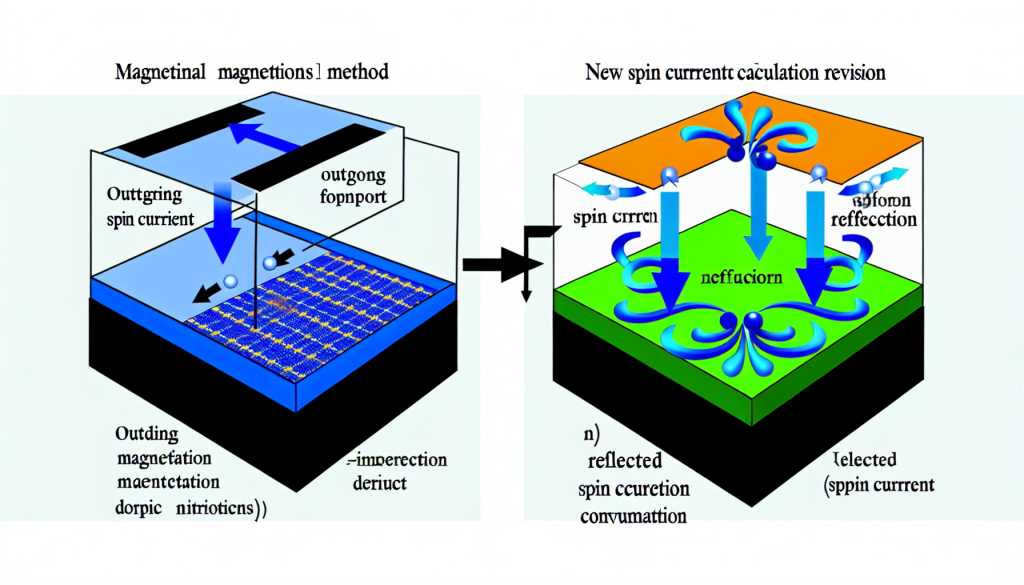"Converting spin waste to power," advancing core technology for ultra-efficient future information systems

Image:
(Left) The traditional setup applies current around the edges of a magnet to create spins that enter the magnetic material. However, during this transfer, some spins are lost, lowering the efficiency of realigning the magnet's orientation. (Right) The new approach highlighted in this study involves directing current straight into the magnetic layer, where spin disperses in a single direction. This escaping spin acts back on the magnet like a push from the other side, effectively changing its magnetic state. Interestingly, the more spin that escapes, the stronger the effect, easing the process of flipping the magnet’s direction.
Credit: Korea Institute of Science and Technology (KIST)
A team led by Dr. Dong-Soo Han at the Korea Institute of Science and Technology (KIST), working with Prof. Jung-Il Hong of DGIST and Prof. Kyung-Hwan Kim of Yonsei University, has proposed a novel mechanism that uses "spin loss"—previously considered an undesirable side effect—as a driving force for controlling magnetization.
Spintronics is a developing field that takes advantage of the electron's spin to handle and store data. It stands out as a promising alternative to conventional semiconductors, offering lower power consumption and improved data retention. This makes it ideal for future technologies such as energy-saving memory, brain-like chips, and systems for complex computation. This recent discovery is pivotal, as it brings a major efficiency boost to devices built on spintronics.
The researchers uncovered a fresh physical mechanism that enables magnetic materials to naturally flip their internal magnetic direction without needing any external forces. These materials are central to emerging information technologies since they encode data through their magnetic alignment—upward for '1' and downward for '0'.
Conventionally, shifting a magnet's orientation required a strong electric current to inject spins into the magnet. But this approach suffers from inefficiencies, as a portion of the spin tends to scatter before reaching the target, wasting power and reducing effectiveness.
While past efforts targeted minimizing this spin dissipation through material enhancements, the new research flips the concept by revealing that this loss actually contributes to reversing a magnet’s direction. It’s comparable to how a balloon jerks around from air rushing out—here, the spin leaving the system aids the switch in orientation.
The experiments revealed a surprising outcome: increased spin loss actually reduced the energy required for magnetization switching. This method achieved up to three times higher energy efficiency than standard practices, without needing rare materials or intricate device frameworks, making it well-suited for mass production.
Moreover, the technique relies on a simplified device layout that fits smoothly with current semiconductor manufacturing methods. This allows for easier scaling, further integration, and adaptability across next-generation tech areas such as AI processors, ultra-efficient memory, neuromorphic systems, and probabilistic computing. In particular, it may serve as a catalyst in shaping compact, power-conscious AI and edge-computing hardware.
"Until now, spintronics research focused only on suppressing spin dissipation, but we’ve turned that around by using it as a way to trigger magnetization changes," explained Dr. Dong-Soo Han, senior researcher at KIST. "We'll continue developing compact, low-energy AI semiconductors that will serve as core components for the energy-efficient computing systems demanded by the AI era."
###
Founded in 1966, KIST is Korea’s first national research institution. Today, it continues to tackle challenges affecting both society and the economy through cutting-edge, impactful science and innovation.
This research received backing from the Ministry of Science and ICT (Minister Bae Kyung-hoon), through initiatives such as the KIST Institutional Program, the Global TOP R&D Project (GTL24041-000), and the National Research Foundation of Korea's Basic Research Program (2020R1A2C2005932). The full findings have been published in the newest issue of the international journal, Nature Communications.
Journal
Nature Communications
DOI
10.1038/s41467-025-61073-w
Article Title
Magnetization switching driven by magnonic spin dissipation
Article Publication Date
1-Jul-2025
